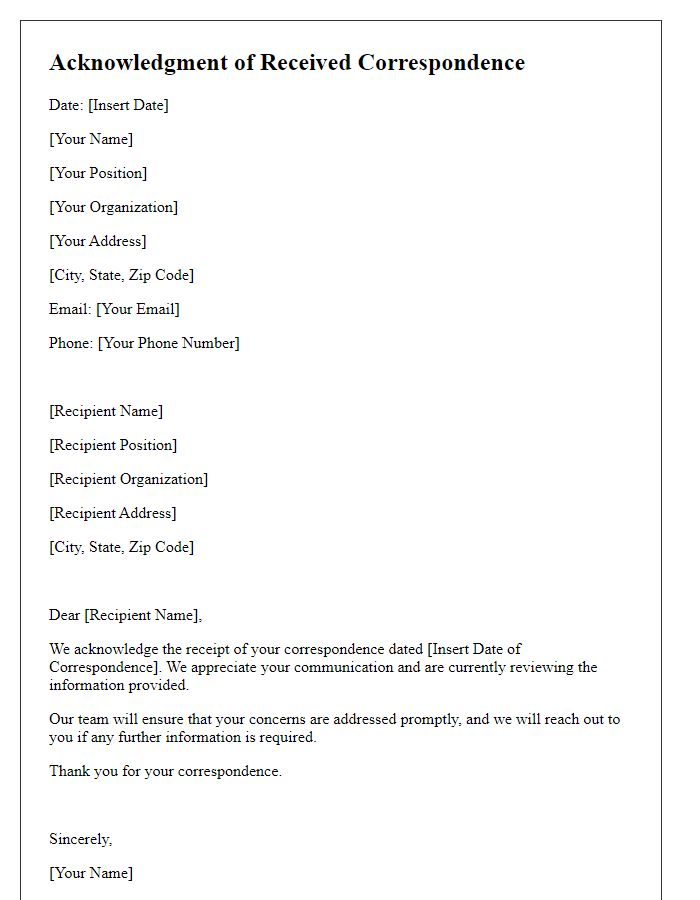Hey there! We all know how important it is to keep our communications clear and organized, especially when it comes to acknowledging receipts for important documents or packages. A well-crafted acknowledgment letter not only shows professionalism but also builds trust with the sender. In this article, we'll explore the key elements to include in your acknowledgment letter templates and share some handy samples. So, if you're ready to streamline your correspondence game, dive in and read more!

Sender's Name and Contact Information
Acknowledgment of receipt is a formal confirmation that an item has been received, such as a letter, package, or document. The sender's name serves as a point of reference, while contact information, including telephone number and email address, allows for easy communication if further action is required. This document often includes a date, establishing when the acknowledgment occurs, and may specify the received item, such as contracts or applications, providing a clear record for both parties. Additionally, acknowledgment may serve various scenarios, including business transactions, legal matters, or personal correspondence, ensuring clarity and accountability in professional and personal engagements.
Recipient's Name and Contact Information
Recipient acknowledgment of receipt documents is crucial in maintaining clear communication. This acknowledgment serves as a formal confirmation that the recipient, identified by their name and contact details, has received an important document or item. For instance, the acknowledgment may pertain to the receipt of a legal contract, an application form, or a shipment of goods. Document dates should be clearly noted to establish a timeline, ensuring both parties have reference for tracking purposes. Additionally, maintaining an organized record of such acknowledgments can assist in future correspondence and mitigate misunderstandings.
Subject Line with Reference Number
Acknowledgment of receipt serves to confirm the receipt of important documents or communication. A well-structured acknowledgment ensures clarity. Key details include Reference Number, which ties the communication to a specific case or transaction and ensures proper tracking. Subject Line succinctly summarizes the content of the communication, enhancing immediate recognition. This helps the recipient quickly identify the purpose, allowing for efficient processing. The acknowledgment should ideally include the date of receipt and any immediate actions required, fostering transparency in communications. Proper formatting and professional tone contribute to the acknowledgment's effectiveness and credibility.
Clear Statement of Receipt Confirmation
Acknowledgment of receipt serves as formal documentation confirming the reception of essential documents or materials. This confirmation typically includes details like the specific items received, the date of receipt, and the sender's information. For instance, a business might acknowledge the receipt of a contract or shipment of goods, ensuring transparency in transactions. Receipt acknowledgments can also feature signatures or timestamps to verify authenticity, enhancing accountability. This practice is vital in various sectors, including finance, legal, and logistics, where documentation integrity holds significant importance.
Date and Signature Line
Receipt acknowledgment forms serve as formal confirmations for the reception of documents or items. The header typically includes the date (such as October 10, 2023), indicating when the items were received. A designated line for the signature is essential, ensuring accountability and traceability of the transaction. The signature line may be followed by the printed name of the recipient, along with their title or position, providing additional identification context. Incorporating a "Received By" section enhances clarity, clearly showing who accepted the items and confirming the transaction's validity.













Comments